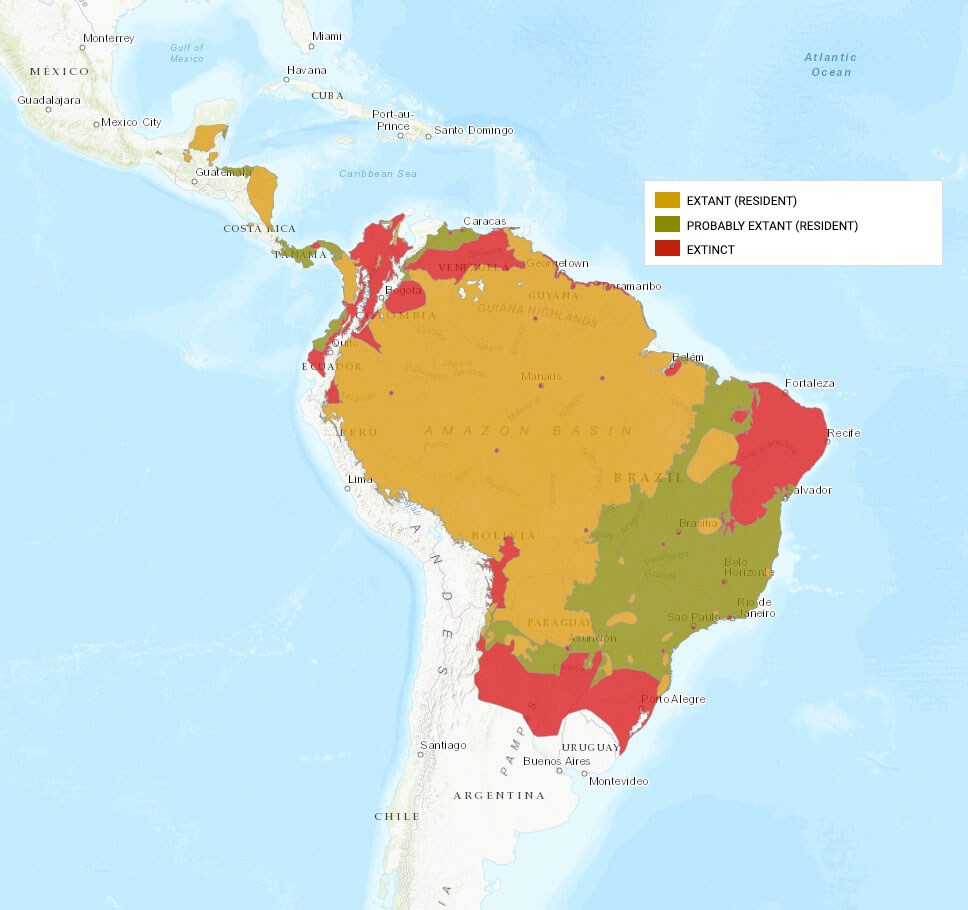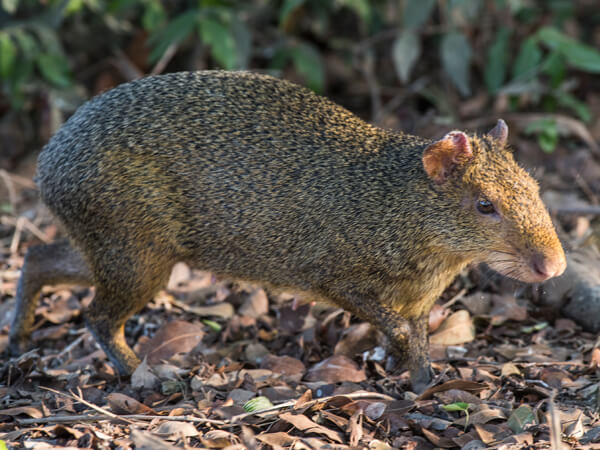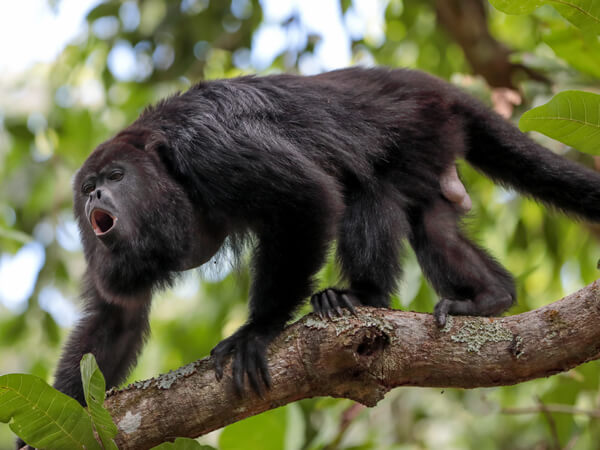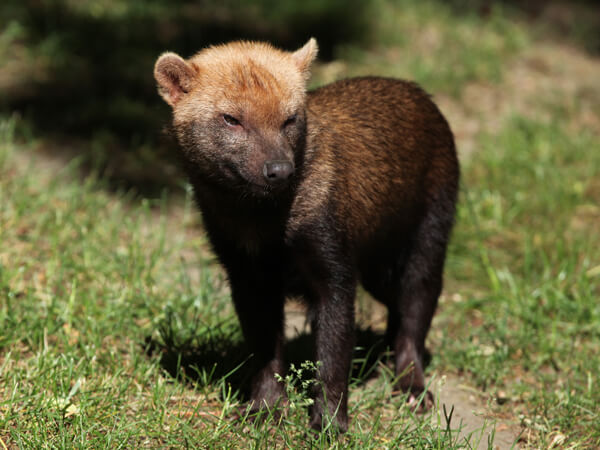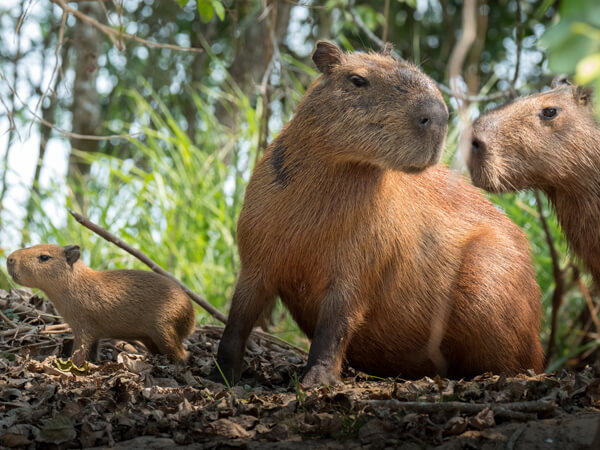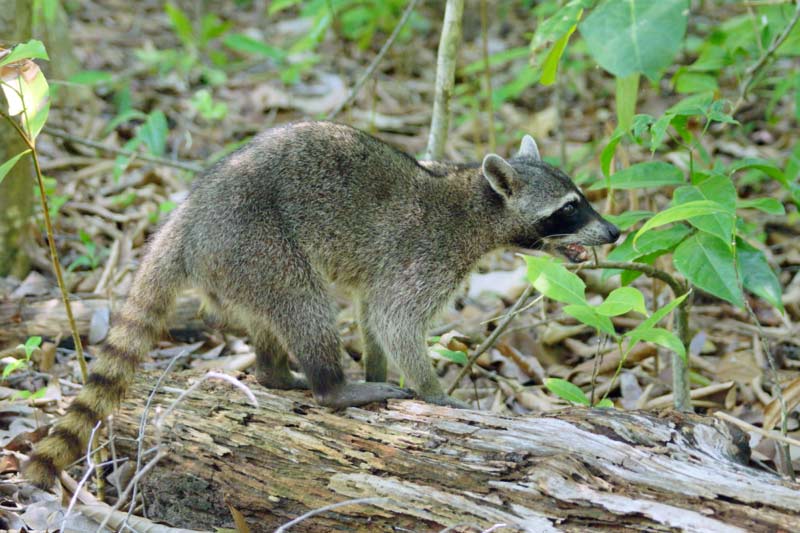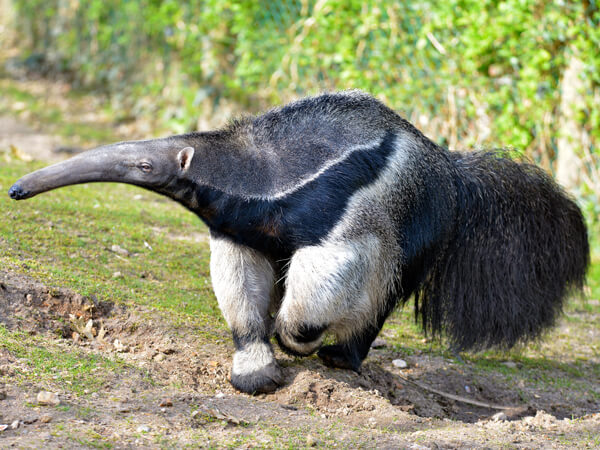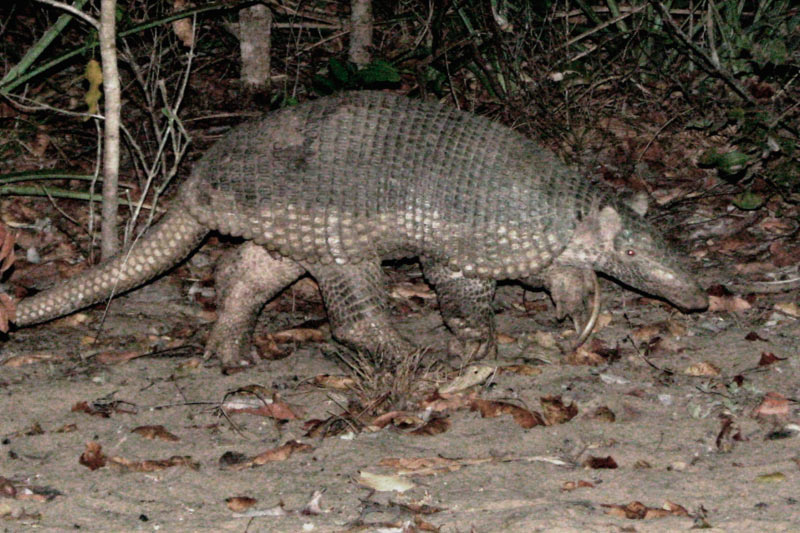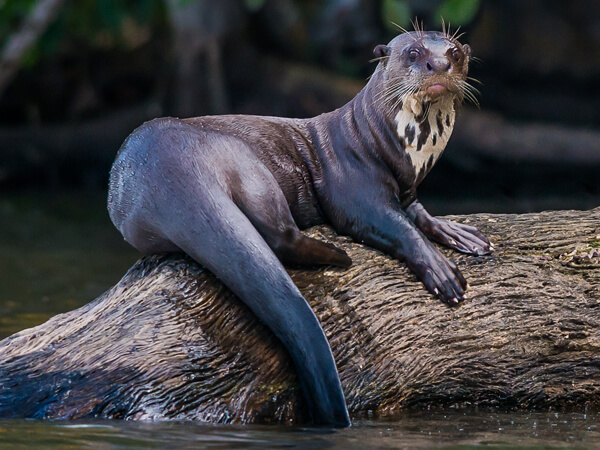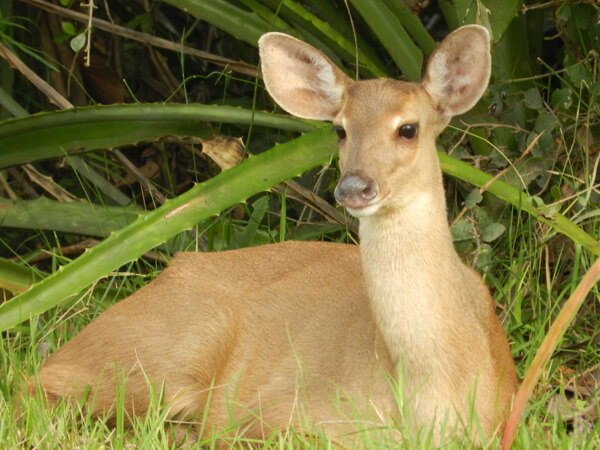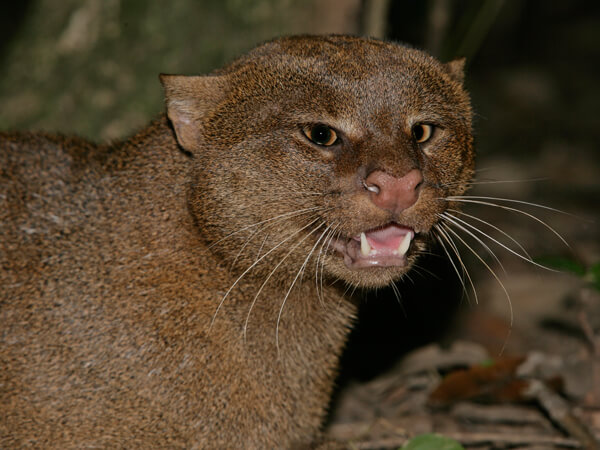The white-lipped peccaries are members of the same family as the pigs (Tayassuidae) and are also popularly known as wild pigs.
Click to learn more
Sometimes they are mistaken for wild boars and feral pigs, which are an invasive and exotic species and actually belong to another family (Suidae). In Tupi-Guarani, tai wa’su means “big tooth”, due to the large canines situated on the front of the mouth.
Although very similar to the collared peccary, white-lipped peccaries are at greater risk of extinction. For example, the species is critically endangered in the Atlantic Forest and threatened in the Cerrado.
Distribution
They occur in a wide distribution, from southern Mexico to the northeast of Argentina and in almost all of Brazil, except in some northeastern states.
Features
Adult males and females measure around 113 centimeters in length, with a tail measuring approximately three centimeters. Adults are 55 centimeters tall and can weigh between 32 to 40 kilograms. The coat may vary between a gray-brown and black color, with a white spot in the region of the lower jaw that extends to the top of the muzzle. For this reason, their English name is white-lipped peccary – this is the easiest way to distinguish them from the collared peccary, whose white spot forms a collar around the neck.
Behavior
With predominantly diurnal and terrestrial habits, white-lipped peccaries live in groups that can contain 300 individuals. Unlike their more timid relatives, such as the collared peccaries, white-lipped peccaries are more social. When threatened, the groups easily scare off approaching predators, including jaguars. Peccaries live in areas of up to 7,000 hectares and are sensitive to changes in the environment, as they need forests and good proximity to water to survive. They have various vocalizations, including beating the top and lower jaws together to make a noise (jaw beats). Secretions, produced by glands, share the function of maintaining the cohesion of the group and demarcating territories. They also like to roll in the mud.
Food
White-lipped peccaries are considered to be frugivorous animals, mainly feeding on fruit, but they also feed on roots, seeds, insect larvae and worms.
Reproduction
Gestation lasts around 180 days, and usually two cubs are born at a time. Piglets are born with a mixed coat color – red, brown and beige – with a darker dorsal stripe that remains until one year of age.
Conservation
White-lipped peccaries have been considered “vulnerable” by the national lists of both the ICMBio and the IUCN. However, in some biomes the situation is more delicate. In the Atlantic, the species is considered “critically endangered”, as well as in the Cerrado, where it is considered “endangered”. In the Amazon and the Pantanal, their populations are more stable.
Threats
The main threats to the species are hunting and habitat loss. As white-lipped peccaries are animals that live in large groups, they require extensive areas to obtain resources, so the fragmentation of habitats is the main threat to the species.

